History of the Globe Library
When the offices of the Boston Globe were relocated to 244 Washington Street in May 1881, the Globe’s library was founded, with Edson W. White as the first librarian, who oversaw the filing of clippings and images, and the gathering of additional reference materials.
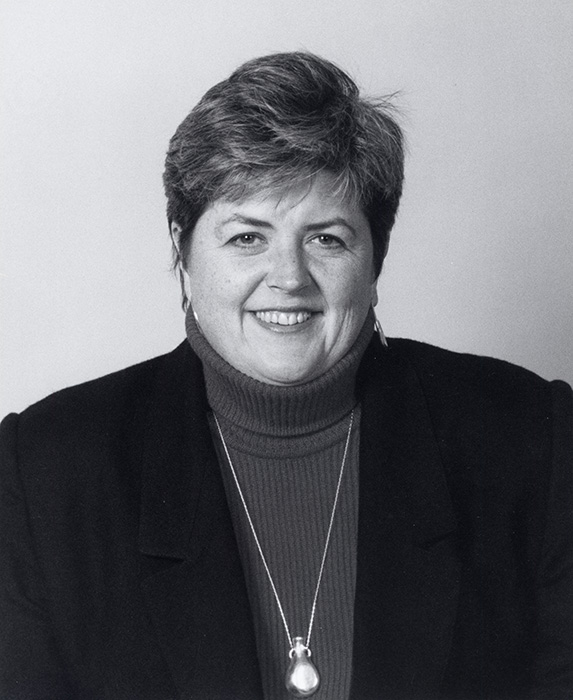
Lisa Tuite, head librarian at the Boston Globe Library until 2017
Other head librarians included William Alcott, who served from 1922 to 1940 and rearranged the library’s organization, as well as Eugene Elliott, Mary H. Welch, and Edward W. Quill, who implemented and supervised the transition to microfilm and implementation of weeding strategies. Lisa Tuite, who first joined the library in the early 1970s, served as the head librarian until 2017.
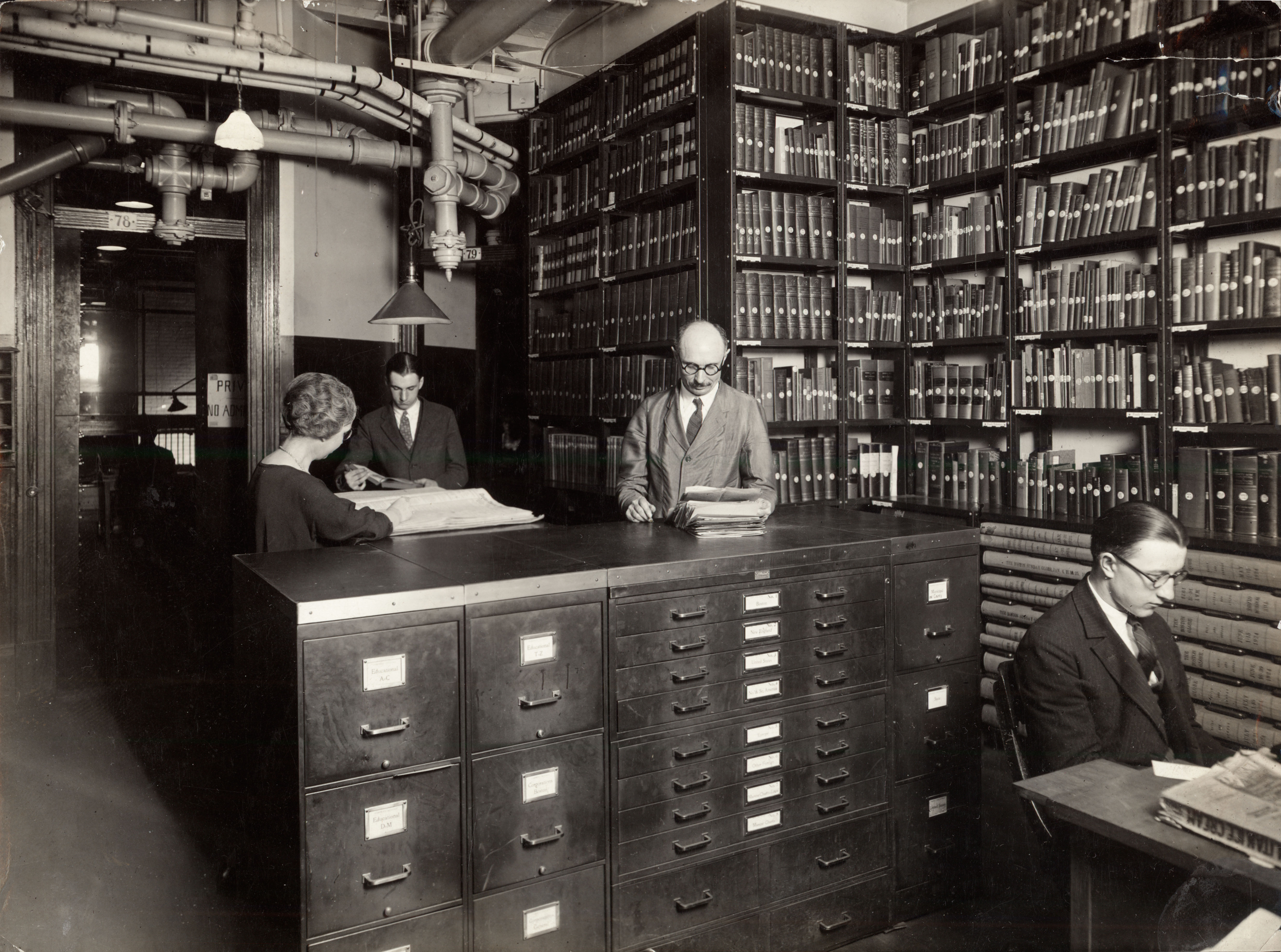
The Boston Globe library in 1925 in the Washington Street building, with Esther Tomelius, Laurence Hansome, head librarian William Alcott, and Joseph Lydon.
Established to support the research and information needs of the Globe newsroom, by April 1926 the library contained 3500 volumes of reference works, about 200,000 subject files containing 1,600,000 clippings, 150,000 photographs, and 60,000 photographic metal half-cuts.
A collection of nineteenth century Boston Almanacs was added to the collection in that same month, joining additional Boston City Guides that made up part of the reference collection. In 1970, it was believed to have about four million newspaper clippings 500,000 photographs, and 35,000 metal photographic cuts; as of 1968 the cuts were contained in one electromechanical unit called a Kard-Veyer, and the photographs were kept in electromechanical file units called Lektrievers.
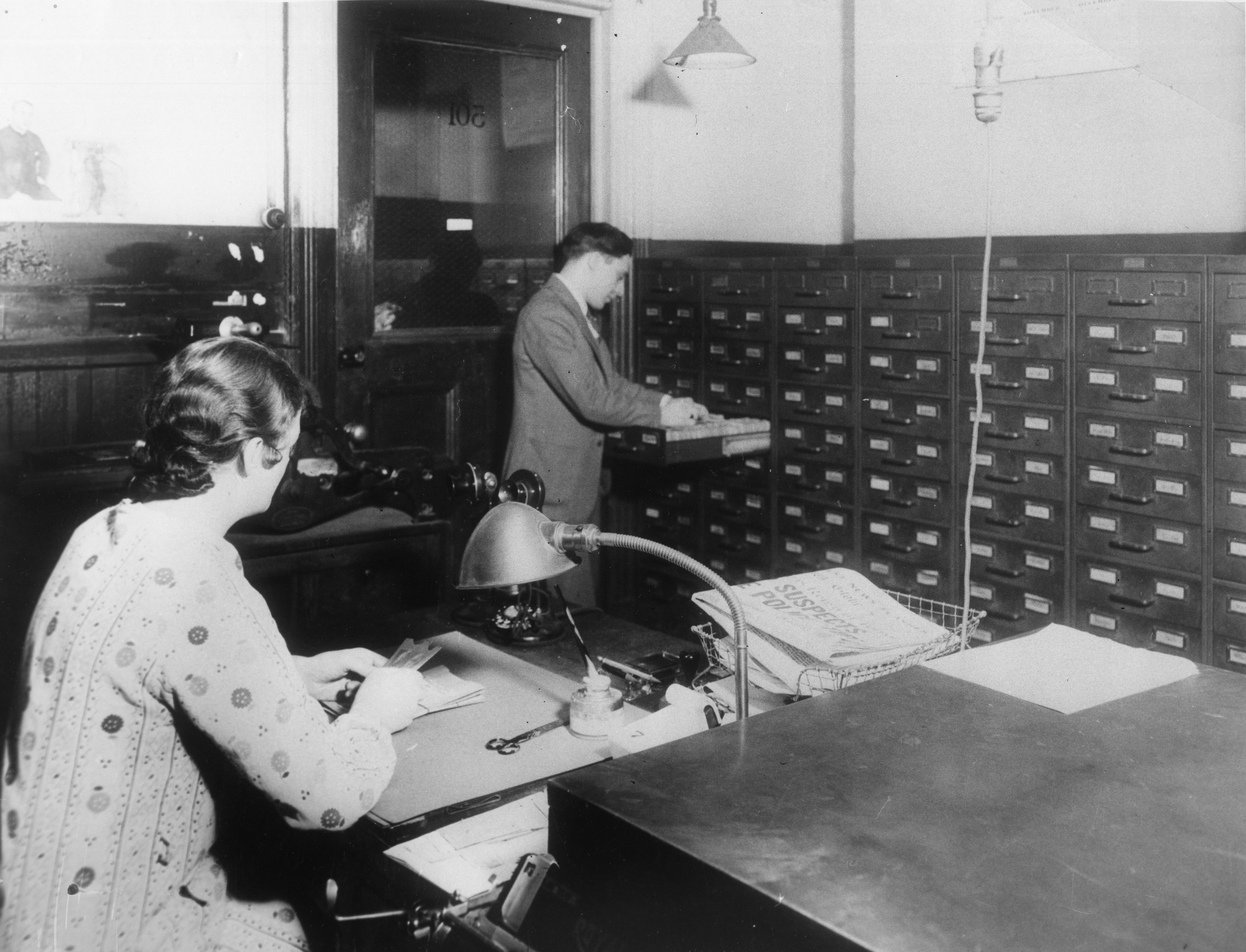
Library staff member Theresa Connors and head librarian Eugene Elliott in the Globe library cut room, 1934.
Though resources were weeded and materials streamlined with the advance of technology, by the time the collection was transferred to Northeastern University, the Globe library included more than five million photographic negatives, 1,650,000 photographs, and countless newspaper clippings collected for reference use from the Globe and other news sources.
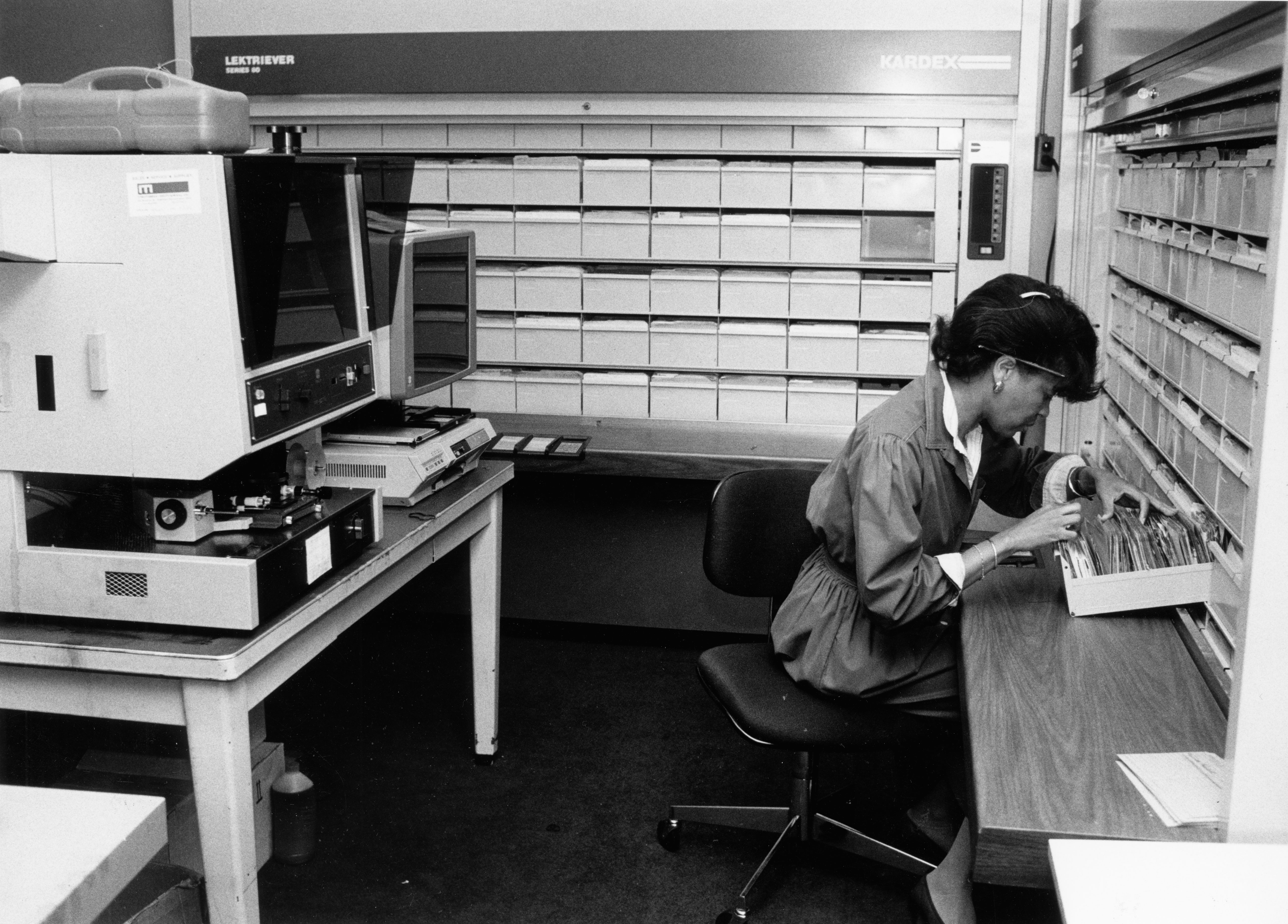
Shirley Jobe in the Boston Globe library, November 16, 1988.
When the Boston Post closed in 1956, the Globe purchased its photograph archives, adding these to the collection. The library further collected materials that came in through the Associated Press, a wire service to which the paper has had access since 1887, and library staff maintained images and articles from the Associated Press as part of the reference materials in the collection. In addition to the physical collections, the Globe library was the first American newspaper to create a searchable electronic cache of public stories in 1980, and in 2010, the Globe digitized the microfilm of the paper from 1872 to 1980, making all published articles available digitally. The Globe started digitizing daily photographs in 1994, as well.
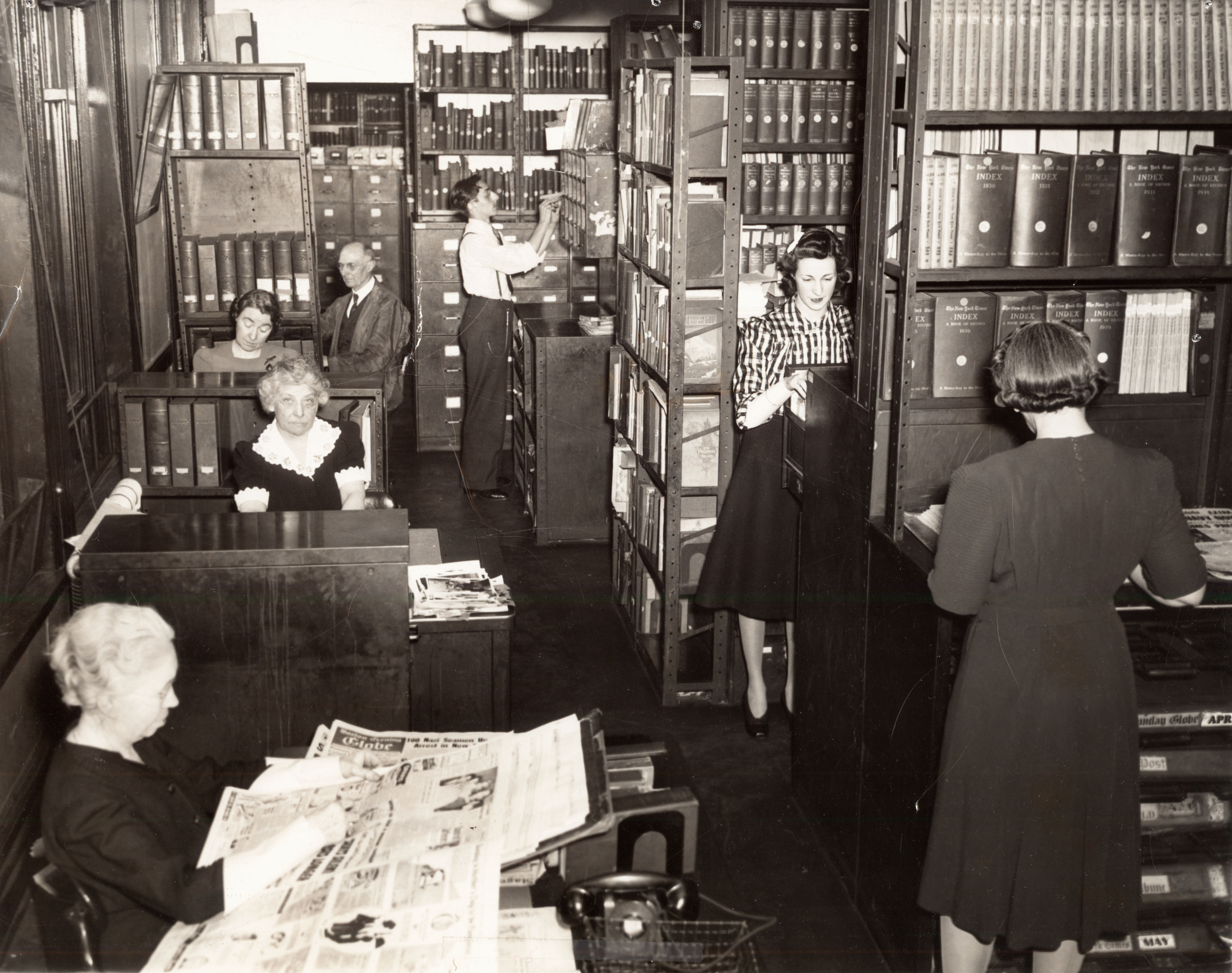
The Boston Globe library in 1941, including future head librarian Mary Welch (third back on the left) and then head librarian William Alcott (back left).
Throughout the twentieth century, the Globe library grew to a 16-person reference service and background research clearinghouse for the newspaper’s reporters and editors. Beyond maintaining the growing reference, photograph, and photographic negative collections and working directly with Globe writers, artists, and other staff members, Globe librarians also serviced community reference requests, answering queries from genealogists, research questions from doctoral students, and court subpoenas. From the late 1980s until 2001, the Globe library staff responded to questions from their readers in an “Ask The Globe” column, responding to queries about the certain news items and the related resources in the library collection, how to access and request copies of photographs from the collection. Countless articles written by staff include lines of thanks and credit to Globe librarians across many topics, and Globe library staff actively produced articles and timelines over the years, as well, including end-of-year news columns that displayed each year’s significant news events in the 1920’s, and more recent pieces on Boston history dating into the twenty-first century.
The Globe library’s research room and physical space was generally limited to the librarians and fellow staff members, but they also welcomed occasional tours, especially those in the library field interested in the special filing system and photo morgue collection and management practices maintained by the librarians. Some of these tours included groups from organizations such as the

Head librarian Ed Quill demonstrating the Lektriever clipping files to 60 newspaper librarians visiting the Globe library. Boston Globe photo dated October 2, 1972.
New York State Library School at Albany (1926 April), the Boston Chapter of the Special Libraries Association (1938 October), and sixty librarians from other Canadian and American newspapers (1972 June), among others. The head librarians were often leaders of and active in the Newspaper Group of the Special Libraries Association. Tours often included displays of the map collection and the clippings collected for reference, as well as explanations of the unique filing system.
The Globe library continues today, following the 2017 move to State Street, though with a reduced physical space and staff. The majority of the historic collections were transferred to Northeastern University during that move, and are accessible not only to Globe staff, but the general public as well.
